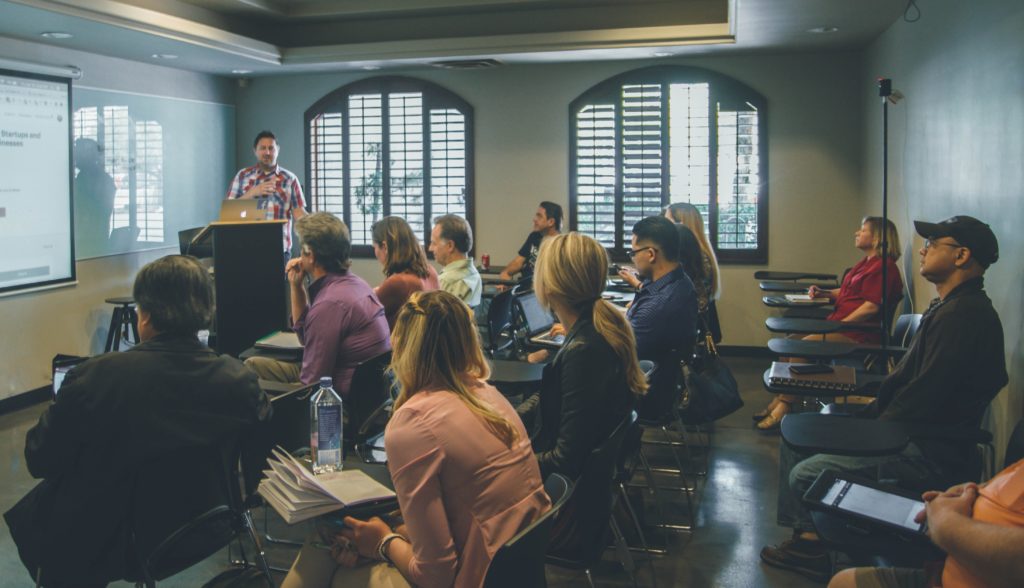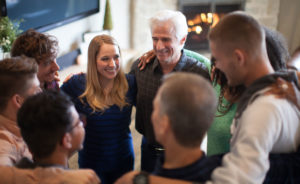Learning Styles and How Your Ministry Can Use Them to Enhance Your Training
Take advantage of every learning style with TrainedUp. Use our pre-made training videos or record your own. Build your unique training program with online training that fits their schedule.
Try TrainedUp by ServeHQ today.
God designed people to learn in so many unique and wonderful ways. You might have seen a child shine when they listen to a book versus reading it. Or maybe they picked up math more quickly when they could use their hands instead of only writing down their work.
Those experiences are examples of learning styles at work.

Learning in person limits learning styles
The concept of learning styles, that people learn best in different ways, began in the 1970s and has been a point of contention for decades. While many studies have shown that children tend to enjoy learning in different ways, many more studies have debunked the myth that children only learn one way or another way.
In reality, learning styles change from situation to situation. Every child can learn in every style, but some styles may be more enjoyable for learning than others. And in some situations or subjects, the student’s learning styles may change.
That’s because learning styles are fluid and can change based on subject, environment, teacher, and the student’s own mood or disposition.
Think about it like appetite. You may generally prefer steak, but sometimes you want pizza. And sometimes you will eat broccoli with a smile! (Maybe wishful thinking, but butter works wonders…)

Learning together is called social learning
We’re going to look at all 7 learning styles. It’s helpful to know them. However, remember that these are interchangeable for the same person. Just like you vary and change your diet from day to day, you should be working to keep your student’s learning styles varied, too. They should be approached more like a nutritious diet rather than a one-style-fits-all for how your student must learn at all times.
One more thing…we don’t consider anyone to be a certain type of learner. We don’t refer to “Auditory Learners” as if there is a person who only learns through listening. We refer to “Auditory Learning” as a style of learning that every person can experience and enjoy, but some people enjoy more and find more success with.
The Seven Learning Styles
Visual Spatial Learning
Visual learning is the experience of learning through visual observation. Visual aids help with this type of learning. For example, diagrams, videos, whiteboards, and illustrations can aid in visual spatial learning.
Aural Auditory Learning
Auditory learning happens when someone learns through listening. This can be listening to a lecture or verbal presentation, an audiobook or book read aloud, or to music.
Verbal Linguistic Learning
Verbal learning happens when someone learns via the spoken or written word. This includes spoken lectures, narrated stories or parables, as well as written information or instructions.
Physical Kinesthetic Learning
Kinesthetic learning is experienced through moving the body. This type of learning can happen through direct manipulation of physical items like when doing a science experiment. It can also happen through dance, tinkering, doing math with fingers and objects, or playing a physical game.
Logical Mathematical Learning
Logical learning takes place for students when reasoning and numbers are present. Of course, most Math concepts appeal to logical learning experiences, but many Science, English, and even Social Studies topics lean on logic to help students learn new things.
Social Interpersonal Learning
Social learning happens when students learn together with other students. Students who excel at social learning love group projects, discussions, brainstorming, and sharing ideas.
Solitary Intrapersonal Learning
Solitary learning is the opposite of social learning. It happens alone, through self-study. Social learning and solitary learning are often paired together for incredible results. Preparing alone for their part in a group project is a classic example of solitary and social learning working together.
Train church volunteers and disciples online, easy.
Use our simple on-demand video training courses to equip volunteers, develop leaders, and teach disciples. Create your own training or use our video library. Our training automation platform makes it simple and fast to get your people ready for ministry.
Other Posts You May Like
All Growth Begins with Self-Awareness
My first year on the YouVersion Bible App team was exciting and challenging. I joined the team to help with partnerships and community-building. Like any new job, the first year came with a learning curve and the need to pick up new skills. I had never been part of a technology team before, so I…
Is Your Leadership Style Helping or Hurting You?
Your leadership style — how you make decisions, connect with and influence others, delegate, handle conflict, cast vision — is shaped by many factors. Your family history and work experience, along with your personality and internal wiring, impact how you think about and “do” leadership today. Leaders we have worked with, for better or worse,…
A Church Is Only As Healthy As Its Team
When you joined the team at your church, what kind of training did you get in the first weeks? Did you have an HR meeting to cover the health insurance and retirement accounts? Did you cover how to submit an expense report or reserve a room on the master calendar? How about how to handle…



